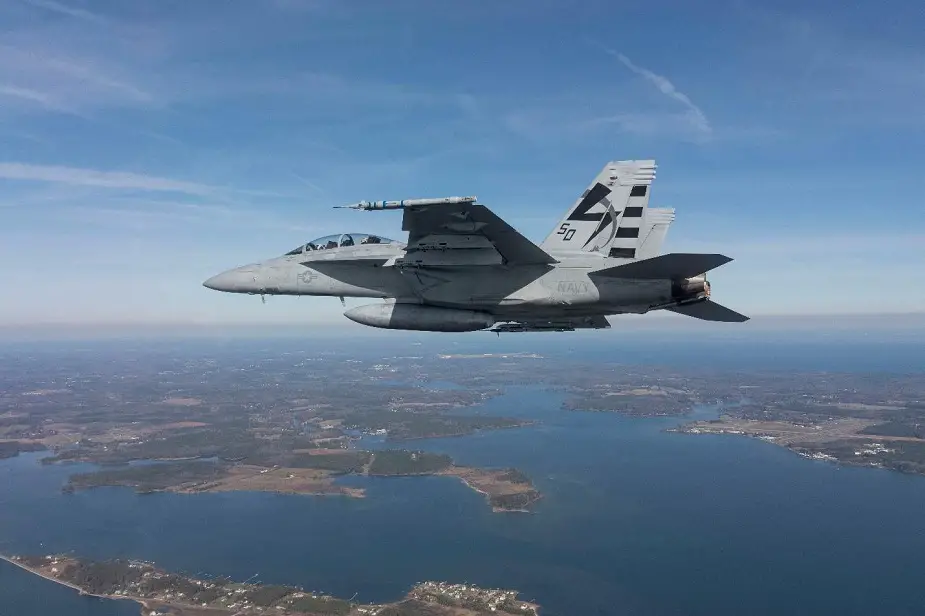Breaking news
US Navy completes first flight of next-gen air combat training system on F/A-18 Super Hornet.
The Naval Aviation Training System and Ranges program office (PMA-205) recently completed the first flight test of its next-generation air combat training system, the Tactical Combat Training System Increment II (TCTS II), on an F/A-18F at Naval Air Station Patuxent River, Md. The second flight test, the first for this system involving two aircraft, followed in quick succession using two F/A-18E aircraft.
Follow Air Recognition on Google News at this link
 The Tactical Combat Training System Increment II (TCTS II) pod successfully completed its first single aircraft flight test at Patuxent River Dec. 11, followed by its first two aircraft flight test on Dec.15 (Picture source: NAVAIR )
The Tactical Combat Training System Increment II (TCTS II) pod successfully completed its first single aircraft flight test at Patuxent River Dec. 11, followed by its first two aircraft flight test on Dec.15 (Picture source: NAVAIR )
Air Test and Evaluation Squadron (VX) 23 conducted the test flights and the PMA-205 test team collected and analyzed the data in real time with its industry partner, Collins Aerospace Systems, Cedar Rapids, Iowa (Collins).
“Our team faced software, COVID, and platform challenges but worked with urgency to stay on track for low rate initial production decision in April. The fact that the date has not changed since contract award in 2017 speaks volumes of not only our team but also the level of support from the Navy to field this capability,” said Capt. Lisa Sullivan, PMA-205 program manager.
The TCTS II system, developed by Collins, is an open architecture system enabling highly secure air combat training between aircraft, replacing and advancing the existing range training infrastructure. The TCTS II system is the first certified encrypted, multi-level security training pod that communicates with both airborne and ground equipment.
“This is the first time the team has been able to see the system in use in a real-world environment using an operational platform. These tests provide valuable insight into system performance, including pod-to-pod and pod-to-ground datalink performance, positional accuracy, and weapon simulations,” said Jake Kiehlmeier, PMA-205 TCTS II lead test engineer.
The U.S. Air Force joined the Navy’s TCTS II program, leveraging investments made by the Navy and delivering training capabilities sooner and at a lower cost. The services are working together to develop and use this system to train against real-world threats.
“This is just the beginning of how this system and integration of additional Live, Virtual, Constructive capabilities in the portfolio will revolutionize training for the U.S Air Force and the Navy alike,” said Sullivan.
PMA-205 provides full life cycle acquisition of naval aviation platform and general training systems, training range instrumentation systems, and distributed mission training centers to provide U.S. Navy and Marine Corps pilots, naval flight officers, aircrew, and maintainers with the training equipment required to provide lethal capability and operational readiness.
Training devices include flight simulators, part-task trainers, maintenance trainers, airborne and underwater training range instrumentation, threat systems, and associated curricula to ensure optimum performance for naval aviation. Responsibilities include execution of naval aviation’s Live, Virtual, and Constructive training strategy, execution of the Navy Aviation Simulator Master Plan, commonality and interoperability across training systems, procurement and sustainment of training products and services to include equipment overhaul and/or replacement, engineering changes, modernization and technology refreshes, and future technology advancements for training systems and training ranges.


























